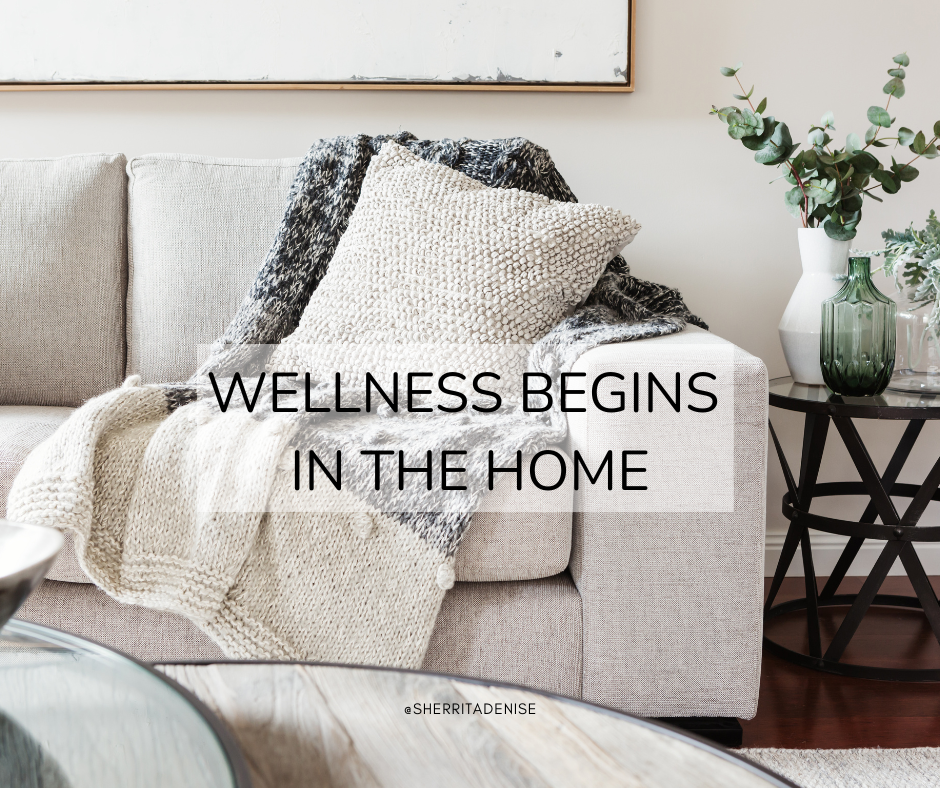Wellness Begins in the Home: Why Your Space Matters More Than You Think
When I launched my wellness journey, I focused on what I ate, but something hit different when I realized my environment was influencing me just as much as my diet.
Your home isn’t just a backdrop, it’s an active player in your health. If it's filled with stale air, toxic chemicals, or poor ventilation, it’s silently working against your wellness. But when you make deliberate choices, for clean air, safe water, and mindful finishes, you transform your home into a wellness partner.
Why This Matters
Your home is more than just where you sleep at night. It’s the space where you spend most of your time, and it has a direct impact on how you feel every single day. A home filled with fresh air, clean water, and non-toxic materials promotes health, while a home filled with pollutants, chemicals, and poor ventilation can lead to fatigue, allergies, and long-term health concerns.
But creating a healthy home is not about striving for perfection, it’s about awareness and small, intentional choices that create a space that supports your well-being.
The Invisible Work of Wellness at Home
Indoor Air Quality
Indoor air can be worse than outdoor air thanks to VOCs from cleaners, furniture, and synthetic scents. These compounds can mess with your hormones, skin, and lungs. I swapped out heavy-duty cleaners for plant-based versions, ditched air fresheners for simmer pots, and instantly noticed a shift.
Water Quality
Tap water often carries chlorine, fluoride, and heavy metals. These contaminants don’t just affect the taste of water; they can impact digestion, skin, and even hair health. A simple faucet filter or high-grade pitcher filter can remove most of it, and it shows. Better tastes, better digestion, better everything.
Plastic & Chemical Exposure
Plastic containers, like the ones used to store food for meal prep, and non-stick cookware seem harmless, until you learn that they contain endocrine-disrupting chemicals like BPA and phthalates, which can seep into food, especially when heated. These chemicals mimic hormones in the body and can contribute to reproductive issues, weight gain, and even chronic illness over time.
I switched to glass storage containers, stainless-steel cookware and BPA-free water bottles.
Lighting & Sleep
I never considered how the lighting in my home could impact my sleep, until I noticed the difference. Bright, cool-toned lights in the evening can disrupt melatonin production, making it harder to fall and stay asleep. On the other hand, exposure to natural light during the day helps regulate energy levels and mood.
When I relocated to Texas, I intentionally chose a home with strategically placed windows that maximize natural sunlight. For evenings, I invested in smart bulbs that allow me to control lighting and reduce energy consumption. Switching to warm-toned bulbs at night and embracing natural daylight during the day improved my sleep and boosted my overall mood.
Ventilation & Mold and Dampness
Humidity builds up, especially in the summer months. Poor ventilation can trap moisture, dust, and allergens inside your living space, leading to respiratory problems, skin irritation, and allergic reactions. Dampness can also lead to mold growth, which further impacts indoor air quality.
To improve ventilation, open windows regularly and use air-purifying plants. You can also invest in a dehumidifier and ensure leaks are repaired quickly to prevent moisture buildup.
Simple Swaps to Create a Healthier Home
You don’t have to flip your whole home overnight, just start with small, intentional changes. Here are a few easy ways to make your space healthier:
Swap the plastic. Use glass or stainless-steel food containers to avoid chemicals from plastic getting into your food.
Clean smarter. Go for non-toxic, fragrance-free cleaners to keep your air fresh without the hidden toxins.
Filter your water. Even a simple pitcher filter makes a difference in cutting out contaminants.
Check your products. Your skin absorbs what you put on it, look for personal care items with real, plant-based ingredients.
Let the air flow. Open windows regularly to get rid of stale indoor air and bring in fresh oxygen.
Be mindful of lighting. Switch to warm, low-blue-light bulbs to support better sleep and reduce eye strain.
It’s not about perfection, it’s about progress. Small shifts add up, and before you know it, you’ll feel the difference.
The Bigger Picture
My wellness journey taught me this: health doesn’t stop at what’s on your plate, it lives in your environment, too.
A clean, organized home is great, but true wellness goes deeper. The air you breathe. The materials in your space. How your home supports your daily habits. That’s what makes the difference.
When I started making intentional changes, everything shifted, my energy, my mindset, my sense of purpose. That shift led me to become a REALTOR®. I saw how deeply our homes impact our health, and I knew I wanted to guide families to make smart investments in spaces that support their well-being, while advocating for the development of healthier communities for both people and planet.
Now, I don’t just talk about healthy living, I help families live it, and I raise awareness around building practices that create stronger, healthier homes and communities for generations to come.
A healthy home isn’t a luxury. It’s foundational.





